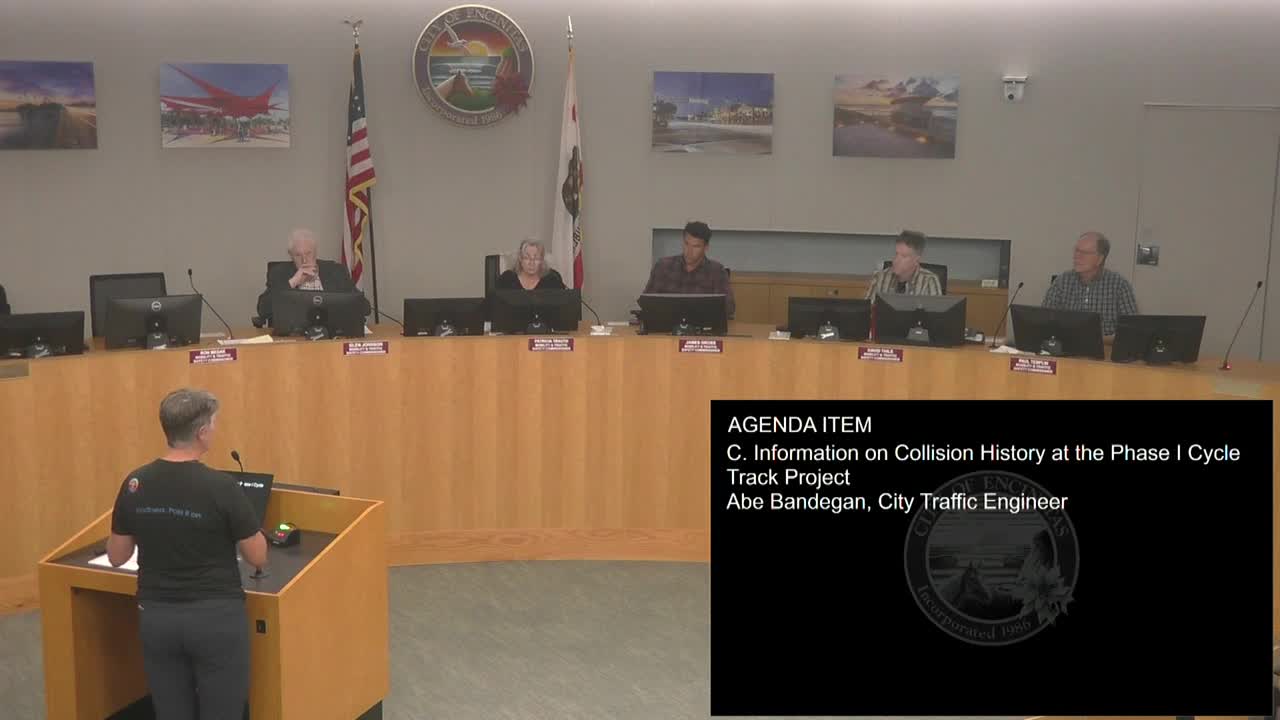Encinitas receives $900K for Highway Safety Improvement Program grants
May 23, 2025 | Encinitas, San Diego County, California
This article was created by AI summarizing key points discussed. AI makes mistakes, so for full details and context, please refer to the video of the full meeting. Please report any errors so we can fix them. Report an error »

In the heart of Encinitas, city officials gathered under the bright lights of the council chamber to address pressing issues surrounding mobility and traffic safety. The recent meeting of the Mobility & Traffic Safety Commission on May 22, 2025, highlighted significant discussions about the city’s approach to improving road safety and enhancing transportation infrastructure.
One of the key topics was the acceptance of the Highway Safety Improvement Program (HSIP) Cycle 12 grants, which awarded Encinitas approximately $900,000 for safety-related projects. The grants are allocated based on collision history, meaning that areas with higher rates of accidents are prioritized for funding. This method, while effective in addressing immediate safety concerns, has drawn criticism for potentially overlooking other beneficial projects that lack a history of collisions.
Abe, a city representative, explained that the city had successfully submitted four applications for this grant cycle, all of which were approved. He emphasized the importance of community input before moving forward with the design phase of the projects. “We didn’t want to proceed with designs only to find out that the commissioners or council had different ideas,” he stated, highlighting the collaborative approach the city aims to take.
Among the proposed projects is the creation of a protected bike lane along Incense Boulevard, designed to enhance safety for cyclists and reduce the risk of accidents. The plan includes adding buffers and bollards, as well as potential improvements to traffic flow, such as additional turn pockets and a third travel lane. These enhancements aim to address both safety and capacity issues along the corridor, which has seen a rise in traffic congestion.
However, the meeting also revealed concerns about the effectiveness of these measures in the face of ongoing traffic violations. Commissioners raised questions about the need for enforcement against speeding and red-light running, suggesting that infrastructure improvements alone may not suffice to ensure safety. Abe acknowledged these concerns, noting that while the HSIP grants focus on specific countermeasures related to collision types, there are other funding sources available for traffic enforcement initiatives.
The discussion underscored a broader challenge faced by cities: balancing immediate safety needs with long-term traffic management strategies. As Encinitas moves forward with its plans, the commission's commitment to community engagement and safety remains a focal point, ensuring that the voices of residents are heard in shaping the future of the city’s transportation landscape.
As the meeting concluded, it was clear that while the city has secured funding for critical safety projects, the path ahead will require careful consideration of both infrastructure and enforcement to create a truly safe environment for all road users.
One of the key topics was the acceptance of the Highway Safety Improvement Program (HSIP) Cycle 12 grants, which awarded Encinitas approximately $900,000 for safety-related projects. The grants are allocated based on collision history, meaning that areas with higher rates of accidents are prioritized for funding. This method, while effective in addressing immediate safety concerns, has drawn criticism for potentially overlooking other beneficial projects that lack a history of collisions.
Abe, a city representative, explained that the city had successfully submitted four applications for this grant cycle, all of which were approved. He emphasized the importance of community input before moving forward with the design phase of the projects. “We didn’t want to proceed with designs only to find out that the commissioners or council had different ideas,” he stated, highlighting the collaborative approach the city aims to take.
Among the proposed projects is the creation of a protected bike lane along Incense Boulevard, designed to enhance safety for cyclists and reduce the risk of accidents. The plan includes adding buffers and bollards, as well as potential improvements to traffic flow, such as additional turn pockets and a third travel lane. These enhancements aim to address both safety and capacity issues along the corridor, which has seen a rise in traffic congestion.
However, the meeting also revealed concerns about the effectiveness of these measures in the face of ongoing traffic violations. Commissioners raised questions about the need for enforcement against speeding and red-light running, suggesting that infrastructure improvements alone may not suffice to ensure safety. Abe acknowledged these concerns, noting that while the HSIP grants focus on specific countermeasures related to collision types, there are other funding sources available for traffic enforcement initiatives.
The discussion underscored a broader challenge faced by cities: balancing immediate safety needs with long-term traffic management strategies. As Encinitas moves forward with its plans, the commission's commitment to community engagement and safety remains a focal point, ensuring that the voices of residents are heard in shaping the future of the city’s transportation landscape.
As the meeting concluded, it was clear that while the city has secured funding for critical safety projects, the path ahead will require careful consideration of both infrastructure and enforcement to create a truly safe environment for all road users.
View full meeting
This article is based on a recent meeting—watch the full video and explore the complete transcript for deeper insights into the discussion.
View full meeting
